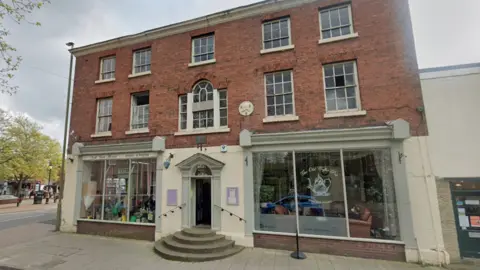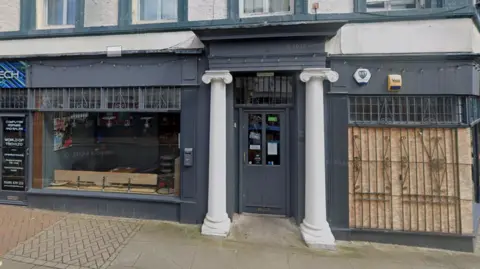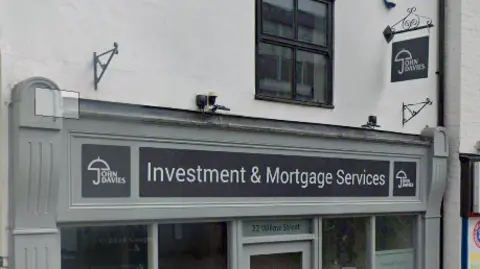Council to discuss shopfront design guide
 Google
GoogleNew rules for the appearance of shop fronts in a Shropshire market town could move a step closer next week.
The proposed new guidance for businesses is set out in the draft Oswestry shopfront design guide, and includes tips on paint colours, window stickers, and advice on incorporating historic features into a shops' appearance.
Shropshire councillors will decide whether to launch an eight-week consultation on the guide from December at a cabinet meeting on Wednesday.
Documents said "poorly designed and incongruous" shop fronts had caused an "increasing number of complaints" to the planning team.
Retail spaces in the town range from 18th and 19th Century rendered or brick buildings, to repurposed warehouses and stables with styles and materials from the 18th to late 20th Centuries.
The town centre also falls within the Oswestry Conservation Area, which includes 125 listed buildings.
The guide aims to encourage business owners to conserve historic features, harmonise with the design of neighbouring properties, and use traditional materials like timber instead of plastic.
 Google
GoogleThe guide covers a multitude of design areas.
It suggests leaving traditional elements intact, like door handles, brass rails and letterboxes - as well as recessed entrances, awnings and canopies.
Hanging signs with wrought iron brackets are described as a traditional feature of the shopping area, and are an "attractive means of signage".
 Google
GoogleIt also says posters and stickers on windows and doors can make shops fronts less attractive, and should be avoided.
Hand-painted timber signs are encouraged, and there are also suggestions for paint colours.
"‘Brilliant white’ did not exist until the mid-20th century, so off-white, cream and stone are more traditional colours," it said.
The guide added that as well as making the area more appealing and cohesive, there may be additional benefits for people with disabilities or conditions.
It said cluttered and poorly designed spaces and fluorescent lighting could cause overstimulation for people who are autistic, and clear signage could benefit people with visual impairments.
Follow BBC Shropshire on BBC Sounds, Facebook, X and Instagram.
